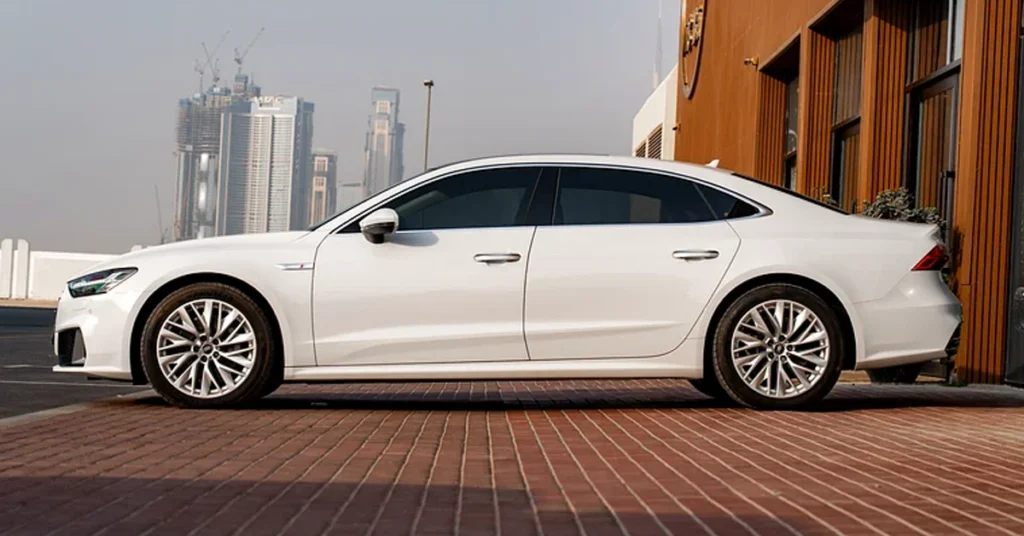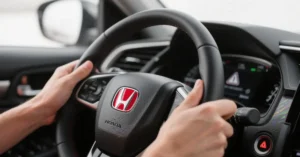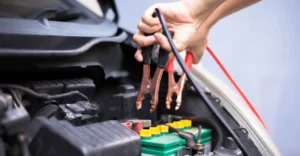When the Audi A7 first arrived in 2010, it instantly blurred the line between executive luxury and sporty practicality. It was Audi’s answer to the Mercedes CLS a swooping four-door “Sportback” that combined the comfort of an A6 with the flair of a grand tourer. Sleek, understated, and full of tech, the A7 was the kind of car you bought with your heart and justified with your head.
But like any used luxury car, time and mileage tell the full story. Underneath that elegant fastback silhouette, some years of the A7 are near bulletproof while others can be expensive headaches waiting to happen. Here’s a deep dive into its real-world reliability, common problems, and which model years are best avoided.
Performance and Driving Dynamics
The A7 C7 generation shared most of its mechanical DNA with the A6 including its chassis, engines, and drivetrain layout. That means it was never just about style; it had substance too.
The 3.0 TFSI supercharged V6 (available in most markets) was the sweet spot: 310 hp paired with a 7-speed S-tronic dual-clutch or 8-speed Tiptronic on quattro models. It delivers effortless mid-range torque, smooth acceleration, and the kind of composure that makes long-distance driving feel easy.
The 3.0 TDI diesel variant (where available) offered excellent fuel efficiency and torque, though the dieselgate era tainted its reputation. The high-performance S7 and RS7, powered by twin-turbo V8s, are a different beast altogether thrilling but expensive to maintain.
On the road, the A7 feels balanced and confident, with precise steering and excellent stability at speed. Adaptive air suspension, available on higher trims, smooths out rough roads beautifully though replacement costs can sting.
Comfort, Interior, and Tech
Even a decade later, the A7’s interior still feels premium. Audi nailed the ergonomics: clear instrumentation, subtle ambient lighting, and superb build quality. The seats are among the most comfortable in the segment, and long drives are fatigue-free thanks to excellent insulation and ride quality.
Infotainment is classic early-2010s Audi MMI interface with rotary controls, crisp graphics, and optional head-up display. It feels dated today compared to modern touch-based systems, but it remains intuitive and durable. The Bang & Olufsen audio system, available on higher trims, is still one of the finest factory sound systems fitted in this era.
Rear headroom is limited by the sloping roofline, but the hatchback-style boot (535 L) makes it more practical than it looks.
Common Problems and Known Faults
While the A7 C7 is generally reliable when maintained properly, a few recurring issues are worth noting for used buyers:
1. Oil Consumption (3.0 TFSI):
Early 3.0 TFSI engines (2011–2014) are known for higher-than-normal oil consumption due to piston ring wear. Frequent top-ups and a check for oil leaks are a must.
2. Timing Chain Tensioner Issues:
Some early production models suffered from noisy timing chains or tensioner failures. Replacements can be costly but are often updated in later builds.
3. DSG/S-Tronic Transmission:
The 7-speed dual-clutch gearbox delivers sharp shifts but can develop mechatronic control unit issues or jerky behavior at low speeds. Regular fluid changes every 60,000 km help.
4. Air Suspension Leaks:
Cars with adaptive air suspension can develop slow leaks over time, especially in humid climates. Replacing a single air strut can cost a significant amount, so check for uneven ride height.
5. Infotainment System Freezing:
A minor but known annoyance the MMI system occasionally freezes or restarts randomly. Usually fixed with a software update or module reset.
6. Water Drain Blockage:
Blocked sunroof or cowl drains can lead to water leaking into the cabin or ECU area. A simple cleaning fix but left unattended, it can cause electrical nightmares.
Recommended Periodic Maintenance (for Long-Term Reliability)
| Maintenance Item | Recommended Interval | Notes |
| Engine Oil & Filter | Every 10,000–12,000 km | Use fully synthetic oil (VW 502/505 spec) |
| Transmission Fluid (S-Tronic/Tiptronic) | Every 60,000 km | Essential for smooth shifting and clutch longevity |
| Coolant Flush | Every 2 years | Prevents overheating and water pump corrosion |
| Brake Fluid Replacement | Every 2 years | Maintain proper hydraulic pressure and brake feel |
| Air Filter & Cabin Filter | Every 20,000 km | Replace more often in dusty climates |
| Spark Plugs (3.0 TFSI) | Every 60,000–80,000 km | Use OEM-spec plugs for best performance |
| Timing Chain Inspection | At 100,000 km | Early detection avoids major engine repair |
| Air Suspension System Check | Every 40,000 km | Look for uneven ride height or slow leaks |
| Battery & Electrical System | Annually | Prevent MMI or ECU voltage-related issues |
Sticking to this schedule ensures smoother performance, improved fuel efficiency, and fewer surprise repair bills particularly as the car passes the 100,000 km mark
Running Costs and Ownership
Owning an A7 isn’t ruinous, but it’s not budget-friendly either. Expect higher maintenance and repair costs compared to mainstream sedans. Routine servicing at an independent specialist can help reduce expenses significantly.
Parts availability is decent, especially for the 3.0 TFSI and 3.0 TDI models, as they share components with the A6 and Q7. However, electronic modules and air suspension parts can be pricey.
Fuel economy averages around 8.5–9.5 L/100 km for the petrol and 6.0–7.0 L/100 km for the diesel respectable given the power and weight.
Insurance premiums are reasonable for a luxury car, but ensure you get comprehensive coverage due to potential repair costs from minor electrical or body issues.
Comparison: A7 vs Rivals (2010–2017 Segment)
| Model | Strengths | Weaknesses | Reliability Verdict |
| Audi A7 (C7) | Elegant design, strong V6 engines, practical hatchback boot | Oil consumption, complex electronics | ★★★★☆ |
| BMW 6 Series Gran Coupe (F06) | Superb handling, premium feel | Costly parts, aging infotainment | ★★★☆☆ |
| Mercedes CLS (W218) | Refined ride, powerful V8 options | Expensive suspension repairs | ★★★☆☆ |
| Jaguar XF (X250) | Characterful drive, stylish interior | Patchy reliability record | ★★☆☆☆ |
| Porsche Panamera (970) | Exceptional performance, top-tier build | High running costs | ★★★★☆ |
Recommended Model Years & Years to Avoid
If you’re hunting for a used Audi A7, pay close attention to build years and engine revisions:
Recommended Years:
- 2014–2017 facelift (C7.5) Improved reliability, updated infotainment, refined engines, and fewer timing chain issues.
- Look for models with full-service history, especially those with the updated 3.0 TFSI or 3.0 TDI engines.
Years to Avoid:
- 2011–2013 early builds These were the teething years with higher oil consumption, early MMI glitches, and more frequent DSG complaints.
- Avoid neglected examples with incomplete service records or deferred maintenance repairs can escalate quickly.
MotorHub Verdict
The Audi A7 (C7) remains one of the most desirable used luxury cars from the 2010s. It’s stylish without shouting, fast without fuss, and practical without compromise. When properly maintained, it’s an incredibly rewarding car that still feels modern and capable today.
Go for a 2014–2017 facelift model, keep up with preventive maintenance, and you’ll own one of the best-balanced luxury fastbacks ever made.



